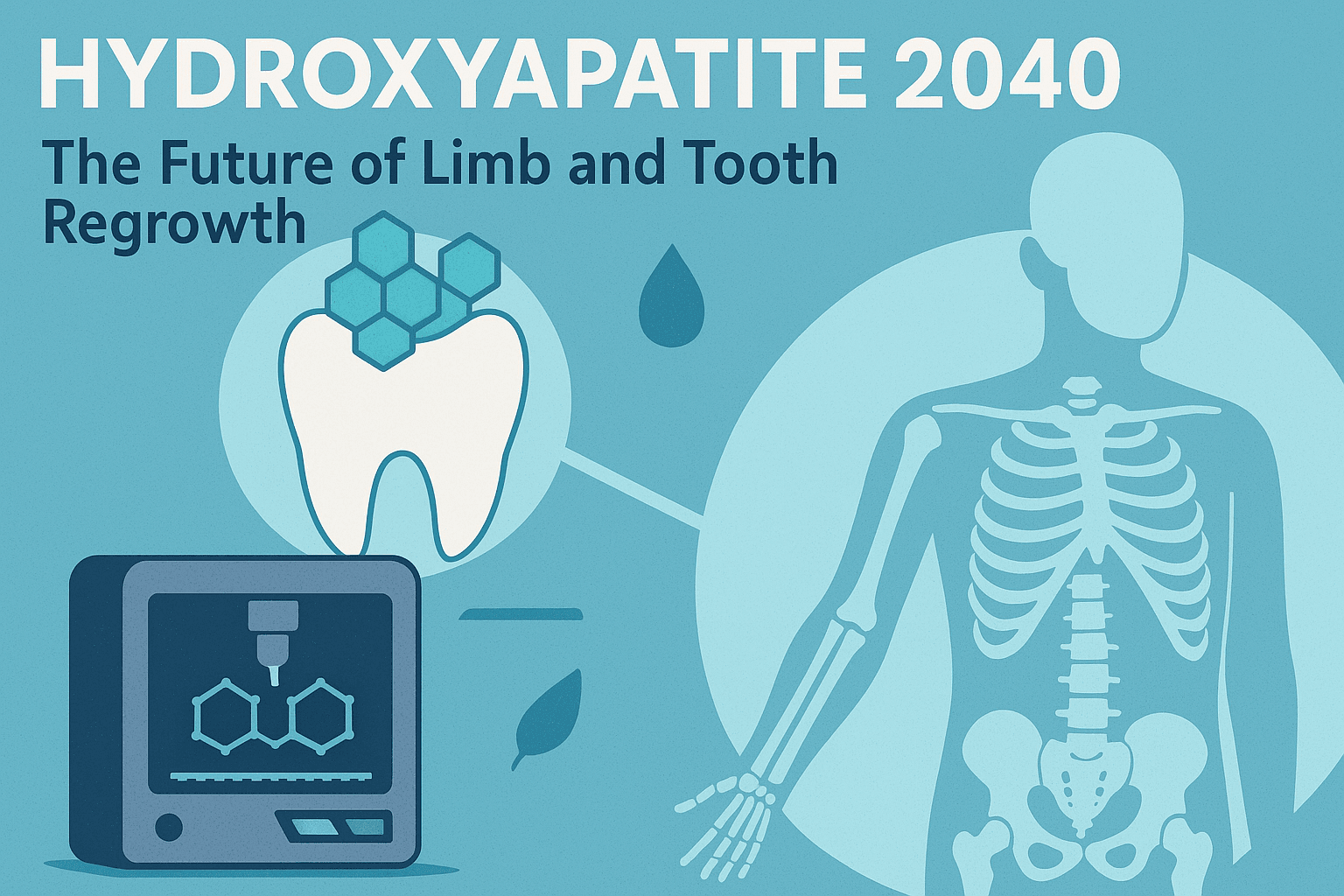Introduction: What Is Ocean Fertilization?
What is ocean fertilization? It is a geoengineering technique that involves adding nutrients such as iron, nitrogen, or phosphorus to the ocean to stimulate phytoplankton blooms, which absorb atmospheric carbon dioxide (CO₂) through photosynthesis. When these microscopic plants die, some sink to the ocean floor, carrying carbon with them, a process that could contribute to carbon sequestration and help mitigate climate change.
As global temperatures rise due to increasing CO₂ emissions, scientists are exploring ocean-based solutions to enhance natural carbon storage. What is a proposed benefit of ocean fertilization? It has the potential to significantly boost the ocean’s natural ability to remove CO₂ from the atmosphere, supplementing land-based carbon capture efforts.
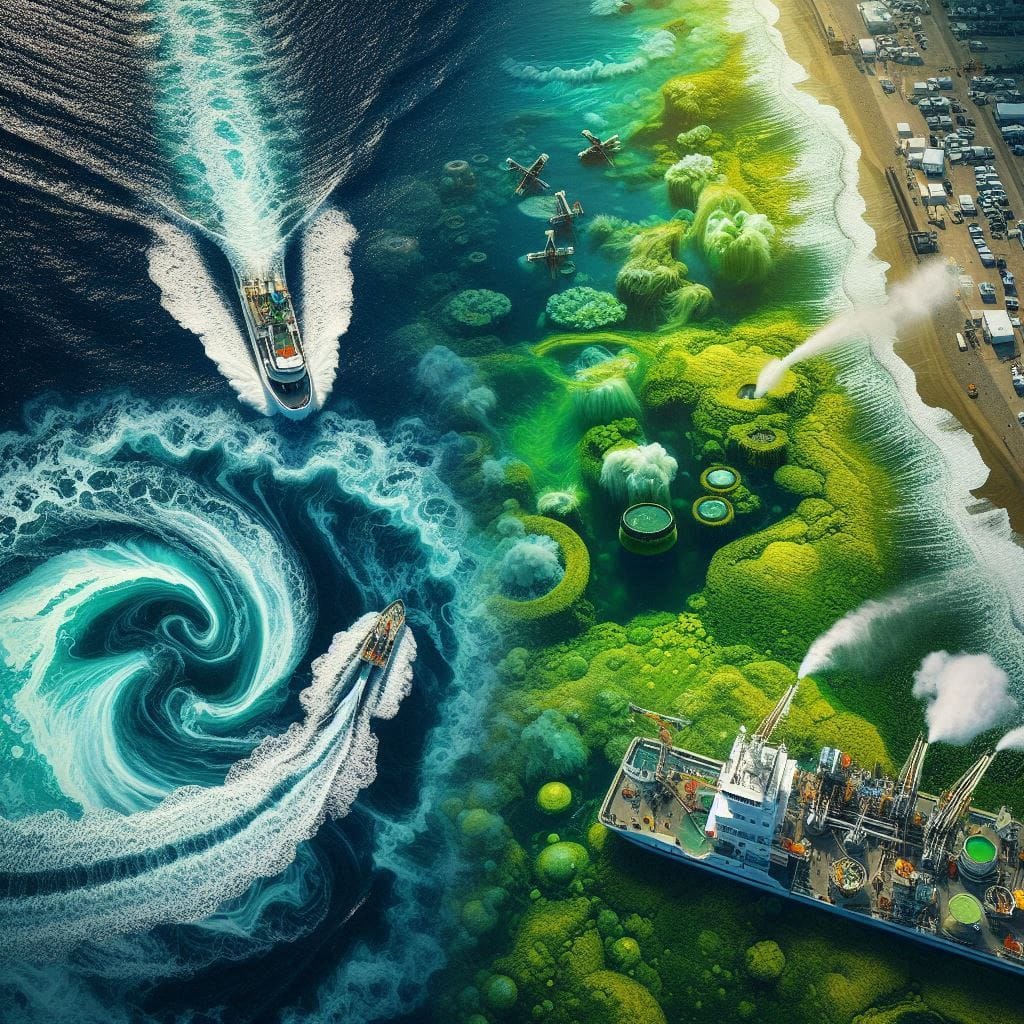
Why Ocean Fertilization Matters in the Fight Against Climate Change
- Carbon Sequestration: By increasing the productivity of marine ecosystems, Marine Carbon Sequestration could enhance long-term carbon storage in deep-sea sediments.
- Potential Climate Impact: If implemented effectively, this process could slow atmospheric CO₂ accumulation, complementing global decarbonization efforts.
- Marine Ecosystem Influence: Geoengineering methods like this may affect marine biodiversity, influencing food webs and fisheries.
Will ocean fertilization work? While theoretical models suggest it can help sequester carbon, real-world experiments have shown mixed results. Its effectiveness depends on numerous factors, including ocean currents, nutrient availability, and ecosystem responses.
Context: A Climate Controversy with Global Implications
Despite its potential, ocean fertilization is highly controversial. Concerns over ocean fertilization dangers include:
- Unintended ecological disruptions, such as toxic algal blooms or changes in oxygen levels.
- Uncertainty about the permanence of carbon sequestration, as CO₂ may be re-released into the atmosphere through microbial decomposition.
- Legal and ethical issues surrounding large-scale manipulation of marine environments.
Given these uncertainties, policymakers and researchers continue to debate whether Marine Carbon Sequestration should be pursued as a climate mitigation strategy or remain strictly experimental.
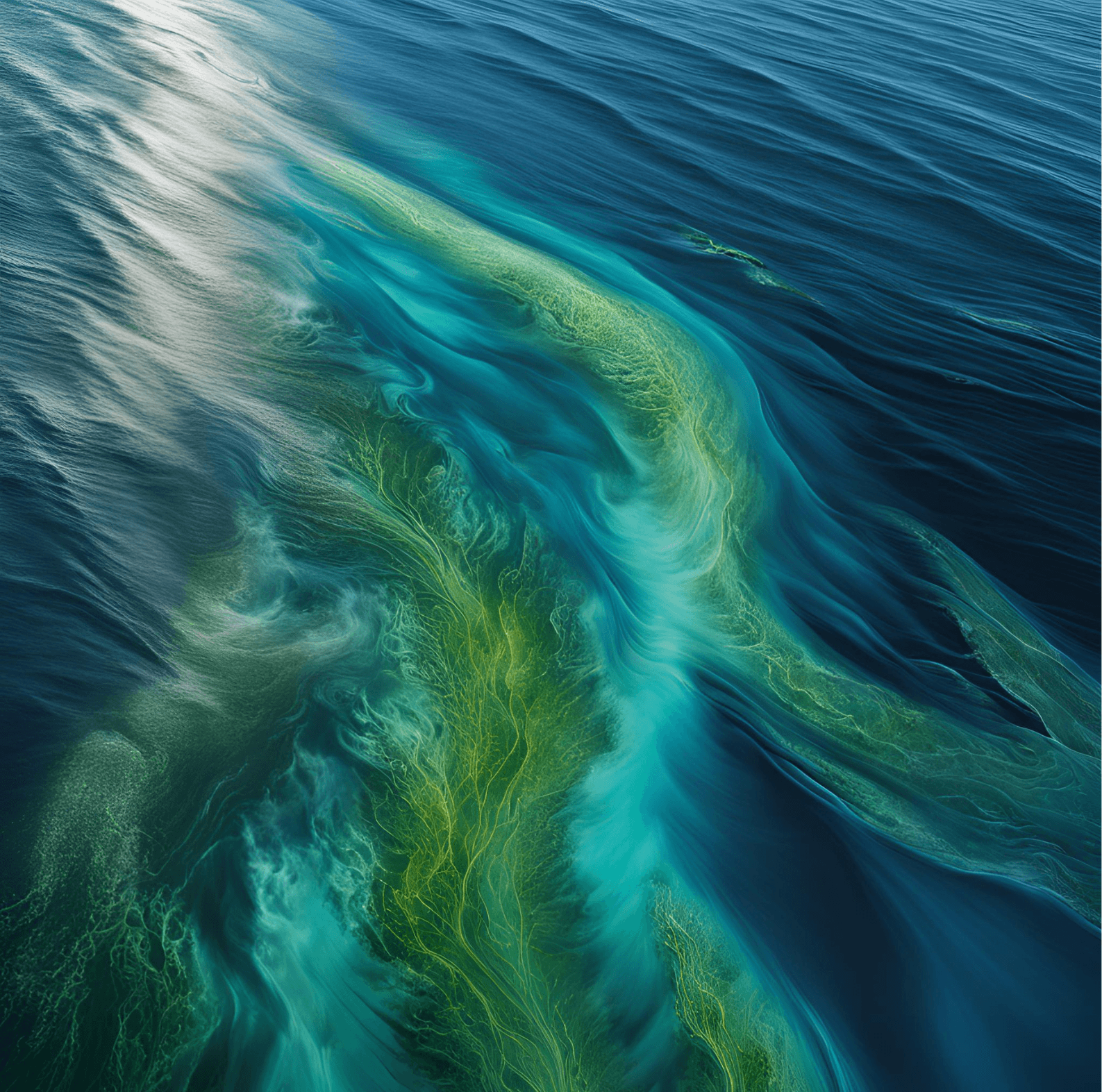
Can fertilizing the ocean truly combat climate change, or does it pose more risks than benefits? The following section will explore the scientific principles behind ocean fertilization and its mechanisms.
The Science Behind Ocean Fertilization
The effectiveness of Marine Carbon Sequestration is based on the biological carbon pump, a natural process in which carbon moves from the ocean surface to deep waters. This system helps regulate atmospheric CO₂ by storing it in oceanic sediments for centuries.
How Does the Biological Carbon Pump Work?
- Phytoplankton absorb CO₂ from the atmosphere during photosynthesis.
- Marine organisms consume phytoplankton blooms, integrating carbon into the food web.
- Some of this organic carbon sinks to deeper ocean layers, where it is stored long-term.
- Over time, deep-sea carbon storage occurs as sedimentation further buries carbon.
By artificially increasing phytoplankton blooms, ocean fertilization aims to boost this natural carbon sink, removing more CO₂ from the atmosphere.
Types of Ocean Fertilization Approaches
- Iron Fertilization: The most studied method, adding iron to iron-limited ocean regions to stimulate phytoplankton blooms and enhance carbon sequestration.
- Nitrogen and Phosphorus Fertilization: These macronutrients can also be added to promote marine ecosystem productivity.
- Urea Fertilization: Some studies have tested adding urea to encourage biological activity in the ocean.
Scientific Evidence: Experiments Testing Ocean Fertilization
Several large-scale experiments have tested the feasibility of ocean fertilization:
- IronEx I & II (1993, 1995): Conducted in the Pacific Ocean, these experiments showed that adding iron could stimulate phytoplankton blooms, but long-term deep-sea carbon storage remained uncertain.
- SOFeX (2002): This study in the Southern Ocean confirmed that iron fertilization significantly increased CO₂ uptake.
- LOHAFEX (2009): Jointly conducted by India and Germany, this experiment fertilized 300 square kilometers of ocean with iron sulfate, but much of the carbon was quickly consumed by marine organisms instead of sinking.
These studies highlight a key question: Will ocean fertilization work? While evidence shows that adding nutrients can boost phytoplankton blooms, uncertainties remain about how much carbon is permanently stored and whether it would significantly reduce global CO₂ levels.
A Marine Desert Bloom: A Useful Analogy
To understand ocean fertilization, imagine an oceanic “desert” where nutrient levels are too low for plant life to thrive. Adding iron is like fertilizing barren soil—suddenly, phytoplankton blooms appear, much like plants growing in a newly nourished field. However, just as excessive fertilizer use can disrupt land ecosystems, large-scale Marine Carbon Sequestration could have unintended consequences for marine ecosystems.
Unanswered Questions and Ongoing Research
Despite promising initial findings, scientists are still investigating key concerns:
- How much carbon is truly sequestered in the deep ocean? Some studies suggest much of the absorbed CO₂ is released back into the atmosphere.
- What are the potential unintended consequences? The risk of ocean fertilization dangers like harmful algal blooms or oxygen depletion is not well understood.
- Is large-scale deployment feasible and ethical? Geoengineering approaches raise legal and environmental concerns.
As scientific research continues, understanding the full scope of Marine Carbon Sequestration is crucial before any large-scale implementation is considered. The next section will explore whether this technique could be a viable climate mitigation strategy or if its risks outweigh its potential benefits.
What Is a Proposed Benefit of Ocean Fertilization?
What is a proposed benefit of ocean fertilization? Proponents of this geoengineering strategy argue that it could enhance carbon dioxide removal (CDR), mitigate climate change, and even support marine biodiversity. However, the actual effectiveness and ecological consequences remain topics of debate.
Enhancing Carbon Sequestration and Climate Change Mitigation
One of the most significant potential benefits of ocean fertilization is its role in carbon sequestration. By stimulating phytoplankton blooms, more atmospheric CO₂ is absorbed and stored in the oceanic carbon sink. Ideally, when these microscopic plants die, a portion of the carbon they contain sinks to the ocean floor, where it remains trapped for centuries.
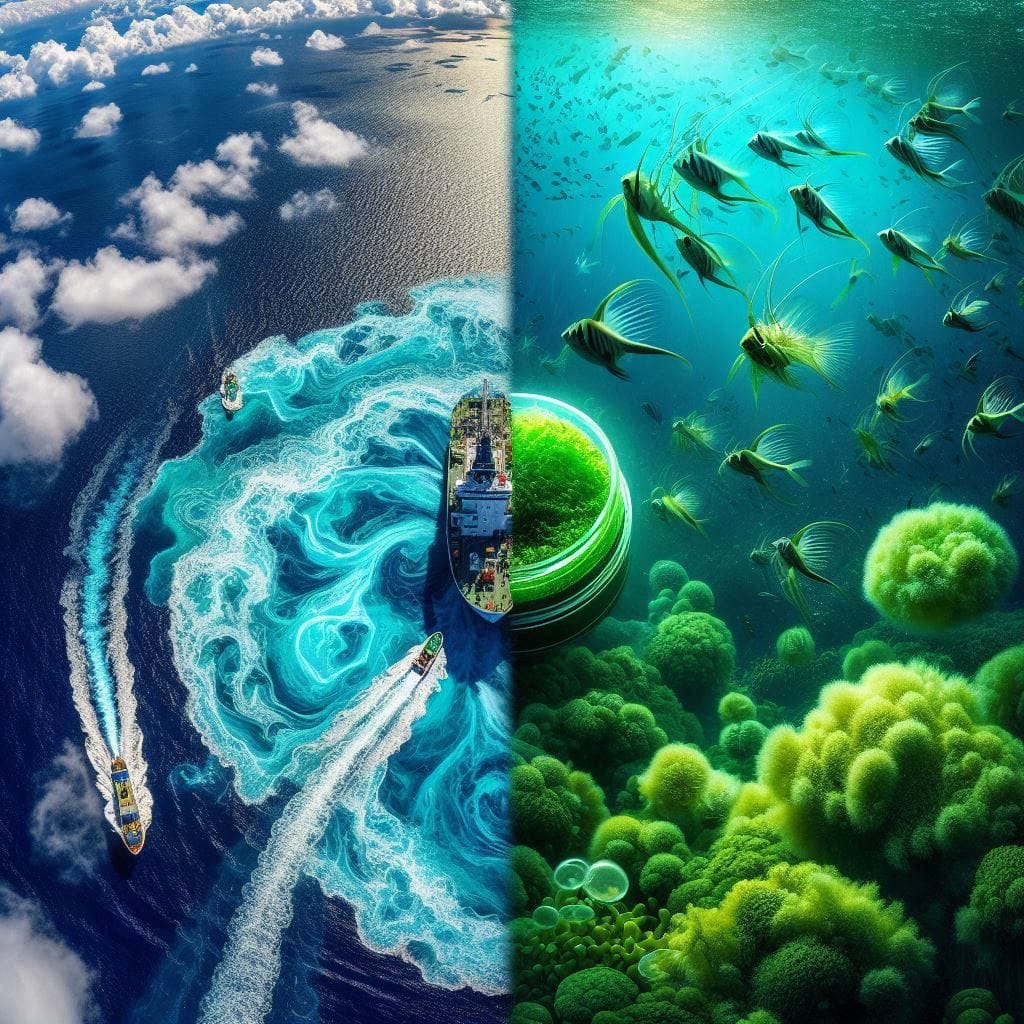
- Carbon Absorption Efficiency: Some studies suggest that Marine Carbon Sequestration could increase carbon uptake in certain iron-limited regions, such as the Southern Ocean.
- Long-Term Storage: The effectiveness of this approach depends on whether the captured carbon remains sequestered in deep-sea sediments or reenters the atmosphere.
If optimized, Oceanic Carbon Dioxide Removal (CDR) could serve as a supplementary method for climate change mitigation, complementing land-based carbon removal strategies like reforestation and direct air capture.
Boosting the Marine Food Web and Fisheries
Another proposed benefit is its potential impact on biodiversity and marine ecosystems. Increased phytoplankton blooms could provide more food for krill, fish, and other marine organisms, possibly leading to:
- Enhanced Fisheries: Larger blooms could support commercial fisheries by increasing food availability for economically important species.
- Ecosystem Support: Some researchers believe controlled ocean fertilization could help counteract declining ocean productivity due to climate change.
However, the ecological outcomes of large-scale Marine Carbon Sequestration remain uncertain. While some areas might experience biodiversity gains, others could face disruptions, such as shifts in species composition or oxygen depletion in deeper waters.
Economic Potential: Can Ocean Fertilization Be Monetized?
Given the urgent need for carbon dioxide removal (CDR) technologies, some experts suggest that ocean fertilization could be integrated into carbon markets. If proven effective, it could generate carbon credits, allowing industries to offset their emissions by investing in ocean-based geoengineering.
- Carbon Offsets: If regulations permit, companies might fund Marine Carbon Sequestration projects as a form of environmental compensation.
- Economic Feasibility: Widespread adoption would require extensive monitoring to verify carbon sequestration efficiency and prevent unintended ecological damage.
Case Study: LOHAFEX (2009) – Mixed Results on Carbon Uptake
One of the largest geoengineering experiments to date, LOHAFEX (2009), fertilized 300 square kilometers of the Southern Ocean with iron sulfate. The results showed increased phytoplankton growth, but much of the carbon was quickly consumed by zooplankton, meaning only a small fraction sank to the deep ocean.
- Findings: While phytoplankton blooms formed, the expected long-term carbon sequestration was lower than anticipated.
- Implications: The study highlighted that ecosystem responses vary, and iron fertilization might not always lead to significant carbon storage.
While theoretical models suggest that ocean fertilization could contribute to climate change mitigation, real-world evidence is still inconclusive. The next section will explore whether this approach is truly viable and the challenges involved in large-scale deployment.
Will Ocean Fertilization Work? Scientific Evidence & Effectiveness
Will ocean fertilization work? While small-scale experiments have demonstrated increased phytoplankton blooms and carbon sequestration, the long-term effectiveness and ecological risks remain uncertain. Understanding the results of geoengineering experiments is essential in assessing its viability as a climate solution.
Scientific Studies: Reviewing Past Experiments
Several major experiments have tested Marine Carbon Sequestration as a potential carbon sequestration strategy:
- IronEx I & II (1993, 1995): Conducted in the Pacific Ocean, these studies showed that adding iron resulted in rapid phytoplankton blooms but provided limited evidence of long-term deep-sea carbon storage.
- SOFeX (2002): A large-scale experiment in the Southern Ocean that confirmed increased CO₂ uptake but raised concerns about unintended ecosystem impacts.
- LOHAFEX (2009): While phytoplankton growth increased, most carbon was quickly recycled back into the ecosystem rather than sinking to the deep ocean.
These trials illustrate that while iron fertilization trials can stimulate biological activity, their effectiveness in storing carbon long-term remains questionable.
Carbon Sequestration Efficiency: How Much Carbon Is Stored?
One of the biggest challenges of ocean fertilization is determining how much carbon is actually sequestered and for how long.
- Short-Term Uptake: Initial phytoplankton blooms absorb significant amounts of CO₂.
- Recycling vs. Storage: Much of the carbon is reabsorbed into the ocean-atmosphere system rather than being permanently sequestered.
- Deep-Sea Storage: Only a small percentage of the carbon sinks to the deep ocean, where it could remain trapped for centuries.
Many scientists argue that the actual carbon sequestration efficiency is lower than theoretical models predict, limiting its impact on global CO₂ levels.
Challenges of Scaling Ocean Fertilization
Even if ocean fertilization proves partially effective, scaling it to a meaningful level presents major challenges:
- Ocean Chemistry Alteration: Large-scale fertilization could affect nutrient balance, oxygen levels, and marine biodiversity.
- Unpredictable Ecosystem Impacts: Changes in phytoplankton composition could trigger harmful algal blooms or disrupt food webs.
- Regulatory and Ethical Concerns: Many nations are hesitant to approve geoengineering methods due to environmental risks.
Expert Opinions: Promise or Ecological Risk?
The scientific community remains divided on whether ocean fertilization should be pursued:
- Supporters argue that it could be a valuable tool for carbon dioxide removal (CDR) if carefully regulated and monitored.
- Critics warn that the risks to marine ecosystems outweigh the potential benefits, advocating for alternative carbon sequestration strategies.
Despite decades of research, there is still no clear consensus on whether Marine Carbon Sequestration can be a reliable and scalable climate solution. The next sections will delve deeper into the risks, ethical concerns, and regulatory challenges surrounding this controversial technology.
Ocean Fertilization Dangers & Ecological Risks
While ocean fertilization is often discussed as a potential solution for carbon sequestration, concerns about its ecological risks and long-term consequences remain. Many experts warn that ocean fertilization dangers could outweigh its potential benefits, as the process may disrupt marine ecosystems, worsen ocean acidification, and introduce unintended consequences.
Unintended Consequences: Disrupting Marine Food Webs
One of the biggest risks of Marine Carbon Sequestration is its impact on marine ecosystems. Introducing excess nutrients could cause:
- Phytoplankton Imbalances: Artificially stimulating phytoplankton blooms may favor certain species over others, altering the composition of marine life.
- Food Web Disruptions: While some species may thrive, others may decline due to changes in nutrient availability and predator-prey relationships.
- Harmful Algal Blooms (HABs): Large-scale fertilization could unintentionally promote toxic algal blooms, which can:
- Deplete oxygen levels, leading to dead zones where marine life cannot survive.
- Release toxins harmful to fish, marine mammals, and even humans.
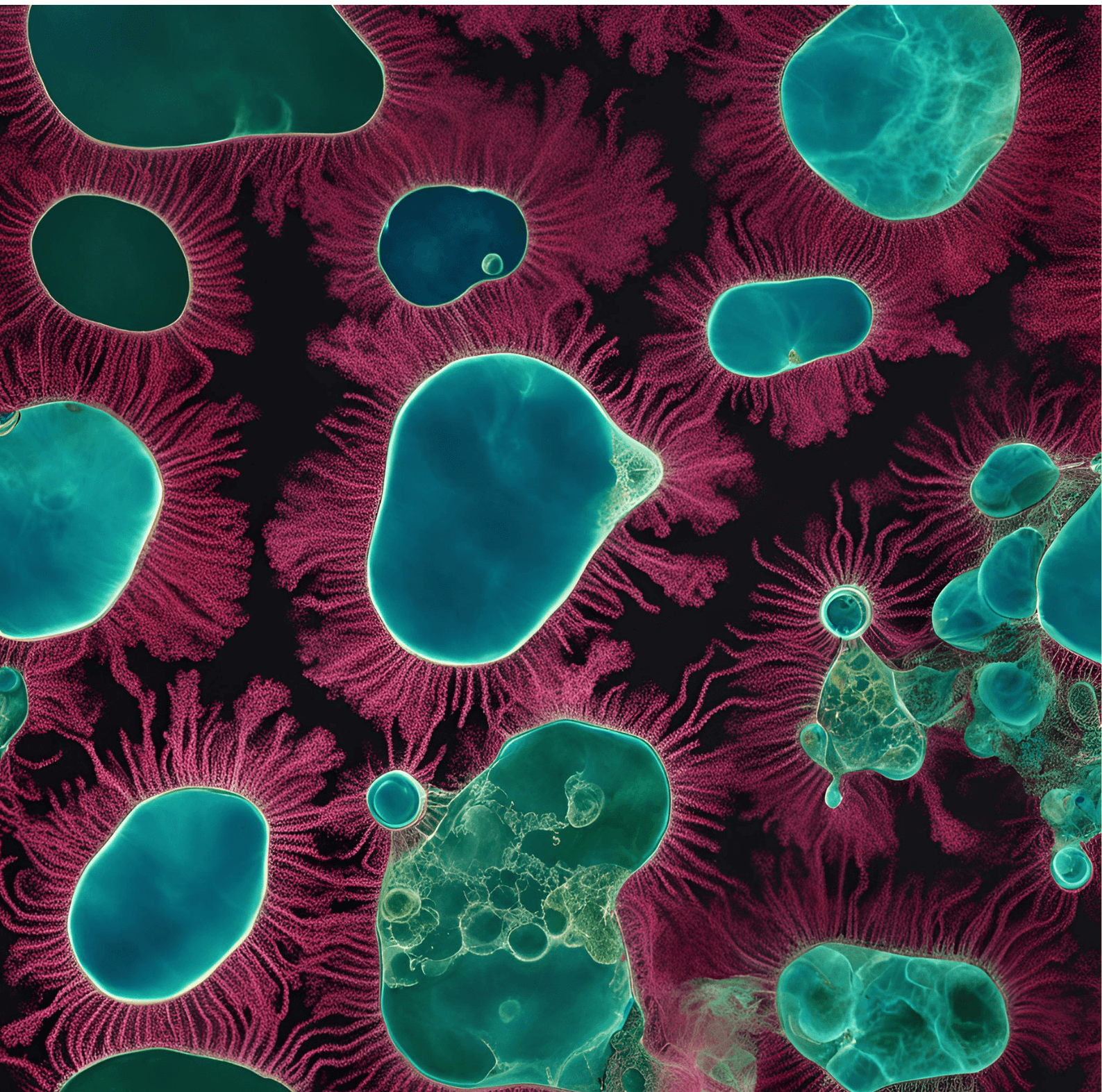
A key example of these unintended effects was seen in the LOHAFEX (2009) experiment, where ocean fertilization caused biological changes that were not fully understood, raising concerns about long-term ecological stability.
Carbon Sequestration Uncertainty: Will CO₂ Stay Locked Away?
While ocean fertilization aims to enhance carbon sequestration, a major concern is whether the captured CO₂ remains stored in deep-sea sediments or eventually re-enters the atmosphere. Challenges include:
- Carbon Recycling: Some of the carbon absorbed by phytoplankton is quickly released back into the atmosphere through respiration or decomposition.
- Limited Long-Term Storage: Only a fraction of carbon sinks to the oceanic carbon sink, reducing its effectiveness as a carbon dioxide removal (CDR) strategy.
- Inefficiency at Scale: Past experiments indicate that fertilizing large ocean areas does not necessarily lead to a proportional increase in deep-sea carbon storage.
Ocean Acidification: How Could It Change Ocean Chemistry?
Another serious concern is the potential for ocean acidification, which occurs when excessive biological activity increases carbon concentrations in seawater. Risks include:
- pH Imbalance: Changes in ocean chemistry could make it more difficult for marine organisms, like coral reefs and shellfish, to form calcium carbonate shells.
- Impact on Marine Biodiversity: Acidified waters could stress marine ecosystems, leading to shifts in species composition and possible declines in biodiversity.
Ironically, while ocean fertilization is meant to combat climate change, it could inadvertently worsen some of its effects by accelerating ocean acidification.
Regulatory & Ethical Concerns: Who Governs Ocean Fertilization?
Since ocean fertilization is a form of geoengineering, it raises significant ethical and regulatory questions:
- Lack of Global Oversight: International waters do not fall under the jurisdiction of any single country, making regulation difficult.
- Moral Hazard: Relying on geoengineering could distract from emissions reduction efforts.
- Environmental Ethics: Should humans interfere with marine ecosystems on a large scale without fully understanding the risks?
Some organizations, such as the London Convention on Marine Pollution, have placed restrictions on ocean fertilization to prevent unregulated experiments. However, some private companies continue to pursue ocean fertilization for potential carbon credit monetization, raising additional concerns about profit-driven environmental interventions.
While Marine Carbon Sequestration presents intriguing possibilities, its risks cannot be ignored. Given these uncertainties, scientists are exploring alternative carbon sequestration strategies that may offer safer, more reliable solutions.
Alternative Carbon Sequestration Strategies
As ocean fertilization remains controversial, researchers are investigating alternative methods of carbon sequestration. These approaches focus on balancing effectiveness, scalability, and ecological safety.
Alternative Geoengineering Approaches for Carbon Removal
Several sustainable geoengineering methods are being explored as alternatives to ocean fertilization:
Direct Air Capture (DAC):
- Uses machines to extract CO₂ directly from the atmosphere.
- Can store CO₂ underground or convert it into synthetic fuels.
- More controlled than ocean fertilization, but energy-intensive and expensive.
Afforestation & Reforestation:
- Planting trees to absorb atmospheric CO₂.
- Enhances natural carbon sinks without major ecological risks.
- Requires significant land and long-term management.
Enhanced Weathering:
- Accelerates natural chemical reactions that absorb CO₂ from the air.
- Uses minerals like olivine to bind CO₂ into stable compounds.
- Has long-lasting effects but is still in the experimental phase.
Marine Carbon Sinks (Alternative to Ocean Fertilization):
- Protecting and restoring seagrass meadows, mangroves, and kelp forests to enhance natural carbon sequestration.
- Unlike ocean fertilization, these ecosystems provide long-term carbon storage while benefiting biodiversity.
Why Ocean Fertilization Alone Isn’t Enough
Even if ocean fertilization were optimized, it should not be relied upon as the sole method of carbon dioxide removal (CDR). Climate mitigation requires a multi-pronged approach, combining:
- Reducing Fossil Fuel Emissions: Cutting CO₂ at the source remains the most effective strategy.
- Natural and Technological Carbon Capture: Using multiple solutions in tandem can maximize carbon sequestration efficiency.
- Policy and Global Cooperation: Effective climate action depends on international agreements, like the Paris Agreement, to ensure sustainable implementation.
Which Approach Is Most Effective? Comparing Carbon Sequestration Methods
| Strategy | Cost | Scalability | Environmental Risk | Long-Term Potential |
|---|---|---|---|---|
| Ocean Fertilization | Medium | High | High (ecological risks) | Uncertain |
| Direct Air Capture (DAC) | High | Low (currently) | Low | Promising |
| Afforestation | Low | Medium | Low | Effective but land-intensive |
| Enhanced Weathering | Medium | Medium | Low | Long-lasting effects |
| Marine Carbon Sinks | Low | High | Low | Sustainable |
While ocean fertilization has potential, its ecological risks and carbon sequestration efficiency concerns make it less reliable compared to other strategies. A well-rounded approach incorporating carbon capture and storage, sustainable geoengineering, and marine conservation will be necessary to effectively combat climate change.
In conclusion, while ocean fertilization remains a subject of scientific inquiry, its risks and uncertainties suggest that alternative carbon sequestration strategies should take priority in global climate action.
The Future of Ocean Fertilization & Policy Considerations
Examining Advancements, Regulation, and Ethical Debates
As climate change accelerates, ocean fertilization continues to be explored as a potential carbon sequestration tool. While past trials have raised concerns, new technologies and policy discussions could shape its future. However, unresolved issues remain regarding climate policy, international environmental law, and sustainable ocean management.
Advancements in Research: The Role of AI and Big Data
Modern research is focusing on improving ocean fertilization through AI-driven modeling and big data analytics. These advancements aim to:
- Enhance Predictive Accuracy: AI can simulate oceanic carbon cycles to predict the effectiveness of ocean fertilization in various regions.
- Reduce Ecological Risks: Machine learning can assess potential ecological risks before large-scale deployment.
- Monitor Carbon Sequestration Efficiency: AI-assisted satellite imaging helps track phytoplankton blooms and carbon dioxide removal (CDR) outcomes.
Studies suggest that integrating AI with biological carbon pump models could refine ocean fertilization strategies, making them more precise and controlled.
Emerging Technologies: Bioengineered Phytoplankton & Nanotechnology
Cutting-edge developments are exploring bioengineered phytoplankton and nanotechnology to improve carbon sequestration:
- Genetically Modified Phytoplankton: Scientists are developing strains designed for deep-sea carbon storage, increasing the likelihood of long-term sequestration.
- Nano-Iron Fertilization: Some researchers propose using nanoparticles instead of conventional iron sulfate, which could be more effective and less disruptive to marine ecosystems.
- Smart Buoys & Autonomous Drones: These technologies could help regulate nutrient dispersion, minimizing ocean fertilization dangers.
If successful, these innovations could make ocean fertilization a more viable tool for climate change mitigation.
International Regulation: Who Governs Ocean Geoengineering?
A major challenge is the lack of global governance over geoengineering in international waters. Key regulatory frameworks include:
- London Convention (1972) & London Protocol (1996): Restrict unregulated dumping of substances, including large-scale ocean fertilization.
- United Nations Convention on the Law of the Sea (UNCLOS): Addresses marine pollution but lacks specific geoengineering regulations.
- Intergovernmental Panel on Climate Change (IPCC): Provides scientific assessments but does not enforce laws.
Despite these agreements, enforcement remains weak, and private entities continue conducting unauthorized ocean fertilization trials. Stronger climate policy is needed to ensure responsible research and prevent potential environmental exploitation.
Public Perception & Ethical Debate: Should We Manipulate Nature?
Beyond regulation, ocean fertilization raises ethical dilemmas:
- Should we intervene in ocean ecosystems to combat climate change?
- Does geoengineering create a moral hazard by reducing pressure to cut emissions?
- Who decides if ocean fertilization is deployed at scale?
Surveys show that while some view ocean fertilization as a necessary tool, others fear unintended consequences and loss of control over marine environments. Public opposition has stalled previous experiments, making public engagement crucial for future developments.
The Road Ahead: Will Ocean Fertilization Become Policy?
Given ongoing research and debates, the future of ocean fertilization depends on:
- Scientific Breakthroughs: More research is needed to confirm its effectiveness and long-term ecological impact.
- Stronger Global Agreements: Policies must ensure ocean fertilization aligns with sustainable ocean management goals.
- Public & Political Will: Transparency and ethical discussions will shape whether ocean fertilization is widely accepted or banned.
With evolving technologies and global climate pressures, ocean fertilization remains a contentious yet intriguing avenue for carbon sequestration.
Conclusion: Should We Pursue Ocean Fertilization?
Weighing the Benefits and Risks
The discussion around ocean fertilization presents both opportunities and significant challenges. As a potential carbon sequestration method, it could help address climate change, but unresolved ecological risks and ethical concerns remain.
Summary of Findings: A Viable Tool or a Dangerous Experiment?
Potential Benefits:
- Enhances carbon dioxide removal (CDR) by stimulating phytoplankton blooms.
- Could support oceanic carbon sinks, storing carbon long-term.
- May contribute to climate change mitigation if properly regulated.
Major Concerns:
- Unintended consequences, such as harmful algal blooms and disruptions to marine ecosystems.
- Uncertainty about long-term deep-sea carbon storage.
- Lack of international regulation, leading to unauthorized experiments.
Given these complexities, ocean fertilization cannot be seen as a stand-alone solution but rather one potential tool within a broader climate action strategy.
Balancing Act: Scientific Caution, Regulation, and Ethical Responsibility
To move forward responsibly, scientific caution and strong international environmental law must guide decision-making. Considerations include:
- Conducting Further Research: Small-scale controlled studies must continue to assess ocean fertilization dangers and carbon sequestration efficiency.
- Developing Transparent Regulations: Global oversight is necessary to prevent reckless deployment in international waters.
- Combining Multiple Solutions: Ocean fertilization should complement, not replace, other carbon capture and storage methods.
Call to Action: The Role of Scientists, Policymakers, and the Public
The future of ocean fertilization depends on collaboration:
- Scientists must provide clear, data-driven insights on its feasibility.
- Policymakers must create effective climate policy to regulate its use.
- The public must stay informed and engaged in discussions about ethical geoengineering interventions.
Final Thought: The Ultimate Question—Should We Intervene?
Ocean fertilization presents both promise and peril. The real question is:
Should humanity actively manipulate ocean ecosystems to fight climate change, or are the risks too great?
The answer remains uncertain, but what is clear is that any decision must be backed by rigorous science, ethical responsibility, and global cooperation.
Related Articles You May Find Interesting
If you found this article insightful, you may also enjoy reading:
- AI in Oceanography – Discover how artificial intelligence is revolutionizing marine research, ocean exploration, and climate monitoring.
- Tidal Energy: Harnessing Ocean Power for a Sustainable Future – Explore how tidal energy is emerging as a renewable solution to harness the power of ocean currents.
- Vertical Ocean Farms – Learn how innovative vertical farming techniques in the ocean can help combat food insecurity and promote sustainable aquaculture.
- Direct Air Capture vs. Carbon Capture: A Detailed Comparison – Understand the key differences between these two carbon removal technologies and their role in mitigating climate change.




